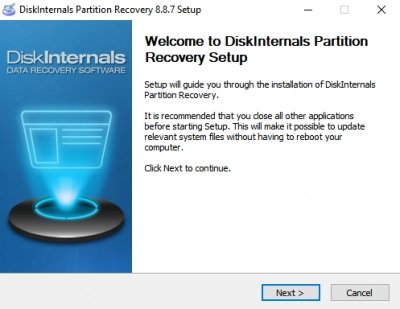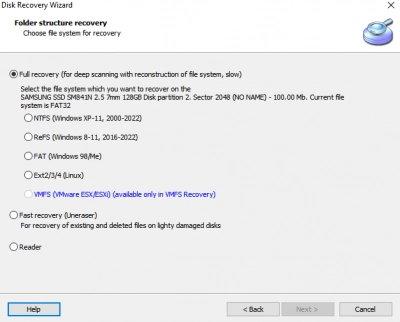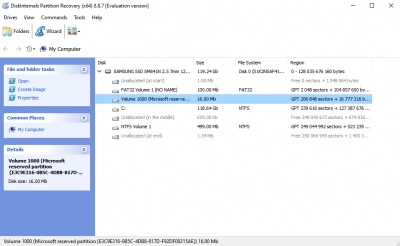How to Fix Hard Drive Won't Boot in Windows?
Trying to boot your Windows 10/8/7 system, and it appears the hard drive isn't allowing the booting process to go on smoothly? Well, such scenarios could mean your hard drive has crashed or is not configured as the primary booting device.
Hard drive boot issues could result from various reasons, including back sectors on the drive, physical damages, and other reasons. It is important that you understand how to navigate a problematic hard drive and get your Windows computer to boot successfully.
This article addresses the issue of the hard drive not allowing your Windows PC to boot successfully. But then, if your hard drive isn't letting your PC boot, are your files saved inside still safe and accessible? How to restore deleted files in Windows 11? Let's read!
Can You Get Files from Hard Drive That Won't Boot?
It is actually a "not so easy" task, but it's not complicated. What does that mean? It means you can still get back your files from the faulty hard drive even though it's not booting into your operating system.
When your Windows computer refuses to boot due to a hard drive problem, it means the system cannot boot the Windows OS installed on the hard drive, which could happen for many reasons. In most cases, this doesn't mean the hard drive has gone completely bad, so you can still access it by connecting it to another computer as an external hard drive.
Part 1: Symptoms That Show Your Hard Drive Won't Boot The System
Hard drives will surely fail at some point – after many years or months (depending on the type and how it is used). But before they fail, typically, you'll notice some unusual signs, which should draw your attention to create a backup or clone the hard drive as a proactive approach to an impending data loss scenario. Different hard drives exhibit different failure signs, but hereunder are the commonest.
Common Physical Failure Signs
These are signs you can notice physically or easily relate to, regardless of the hard drive type or your setup.
- The drive constantly overheats while using the system
- You frequently encounter BSOD (Blue Screen of Death) during boot or regular usage of the system
- It makes a loud noise when the fan turns
- The inability of the device to boot
Common HDD Logical Failure Signs
- Bad sectors prevent data access
- Frequent hard drive crash error screen
- Hard drive-related error messages constantly pop up at random intervals
- Your files and folders suddenly disappear or get corrupt
- OS won't boot
Part 2. The Reasons for Boot Error
Okay, here are the common possible reasons why your computer system won't boot due to the hard drive.
Corrupt Boot Files: Probably, a virus got into the boot partition/sector and corrupted the boot files. Once the boot files are altered, the motherboard won't be able to read the OS files and boot the system.
Incorrect BIOS Setup: You must set your hard drive as the number one drive in the BIOS boot sequence. This is an especially needed action if you changed the hard drive or added a new internal hard drive. So, boot into the BIOS page and reconfigure the boot drive/device order.
Damaged Hard Disk: Of course, a damaged hard drive can cause the system not to boot. A damaged hard drive could mean a hard drive with logical errors or physical scratches.
Improper Connections: Have you checked if the hard drive is connected as supposed? If you recently took off the hard drive to work on the computer, then you should check and confirm that the drive was fitting properly in its housing.
Unfinished OS Update: If you forcefully shut down the computer while downloading/installing Windows OS updates, that could be why the system can't read the OS and boot successfully.
How to Navigate the Situation
With all the possible causes explained, hereunder are some of the proven ways to boot a computer with a faulty hard drive.
1: Check the Cables and Connector Ports
This should be the first thing to do – check the hard drive housing to ensure that dirt isn't hiding in between the connector pins. You may use a brush or handy air blower to blow off any dirt that may be hiding in the housing before re-inserting the hard drive. Also, you may want to check the connector cables that connect the hard drive to other components on the system for possible failure signs.
2: Update Hard Drive Drivers
If the computer can still boot but crashes pretty often after operating it for a few minutes, then you should check the hard drive drivers. Sometimes, hard drive issues are caused due to outdated drivers – hence, simply updating the drivers can fix the issues completely. To update your hard drive's drivers, follow the steps below.
- Right-click on the "Start" icon and select Device Manager
- Look out for your hard drive driver (it's usually under the "Disk Drives" tab)
- Expand the Disk Drive tab, right-click on your hard drive driver, and then select "Update Driver"
- Choose the automatic update option (connect to the internet first)
- Once the driver is updated, close the device manager and reboot the system. The issues should be fixed now, but if the errors keep occurring, try the other tips below.
3: Enable the Hard Drive in BIOS
Maybe the hard drive is disabled from the BIOS, and you don't know. Well, shut down the computer and when trying to boot it back up, boot it into BIOS mode. To boot into BIOS mode, you have to press the F2/F12/F10 button on your keyboard multiple times after pressing the power button to boot the system.
When you boot into BIOS mode, go to the "Boot" tab and move your hard drive to the number one position in the boot sequence (if it's not the first on the list). If Hard Drive is the first on the list, don't bother making any changes; try other tips shared here.
4: Turn it to an External Drive
Uninstall the hard drive and put it in an external hard drive case, then connect it to the computer to see if you can access the files saved inside. If you can, it is advisable to copy out or back up the files, then format the hard drive and re-install Windows OS.
5: Use DiskInternals PArtition Recovery
>When none of these methods worked, you should try using a professional data recovery solution like the DiskInternals Partition Recovery. This software app lets you clone your hard drive in Disk Image format and recovers lost/deleted files from inaccessible hard drives. DiskInternals Partition Recovery runs on all Windows OS computers, regardless of the OS version, and it lets you preview recovered files for free.
Steps to Use DiskInternals Partition Recovery
1. Download and install the software on a working PC
2. Connect the faulty hard drive to an external drive
3. Launch DiskInternals Partition Recovery and select the drive

4. Follow the Recovery Wizard prompts and choose a Full Recovery scanning mode

5. Wait for the scan to run completely to recover every file that has been lost from the drive while also repairing the bad sectors on the drive and fixing the corrupt files

6. After the scan is complete, preview the recovered files, then upgrade to DiskInternals Partition Recovery license to save the files.

Conclusion
These are tips on "how to fix hard drive won't boot in Windows 10/8/7" computers. If you had earlier created an installation media prior to the scenario, you can boot your PC from the installation media and reaccess the files in your hard drive. However, once a hard drive start showing signs of failure, it's best to clone/backup your files from the drive.
FAQ
Why is my hard drive not booting?
A disk boot failure is a specific problem that prevents Windows from installing correctly on your computer. You can get a disk boot failure error when starting your system, which indicates a hardware or software issue.
Keep in mind that this kind of error may also happen while your system is starting with a CD in the drive.
How to fix “Disk boot failure” on Windows?
1. Change BIOS Boot Order
2. Remove Newly Installed Hardware and Check Data Cables as Well as Jumpers
3. Run CHKDSK
4. Use Partition Recovery tool.
